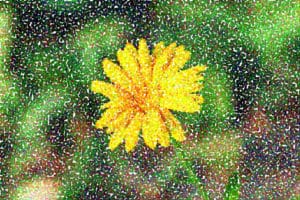
Whether you are an art enthusiast or simply curious about different art forms, join us in unveiling the beauty of pointillism.
Pointillism, as an art technique, is known for its unique approach to creating images through the use of small, distinct dots of color. These dots, when carefully placed next to each other, blend together in the viewer’s eye to create a complete and vibrant image. To understand the magic behind pointillism, let’s explore the technique and principles that make it so captivating.
The fundamental technique in pointillism is the use of dots. Instead of traditional brushstrokes, pointillist artists carefully apply individual dots of color to the canvas. These dots can vary in size and spacing, depending on the desired effect. The dots are typically small and closely spaced, allowing for a seamless blend of colors when viewed from a distance.
One of the key principles of pointillism is the concept of optical blending. By relying on the viewer’s eye to blend the dots together, pointillist artists create the illusion of continuous color and form. This optical blending adds depth and vibrancy to the artwork, making it appear almost luminous. The viewer’s eye becomes an active participant in perceiving the image, adding an interactive element to the viewing experience.
Pointillism is deeply rooted in color theory. Artists who practice this painting technique carefully select and apply colors based on their understanding of how they will interact when blended optically. By placing complementary colors or hues with different saturation levels next to each other, pointillist artists create a visual harmony. This enhances the overall impact of the artwork. The harmonious play of colors is essential in capturing the essence and mood of the subject.
Additionally, creating a pointillist artwork requires a great deal of precision and patience. Every dot plays a crucial role in the final composition. Meticulous attention to detail is necessary to achieve the desired effect. Pointillist artists often spend countless hours on a single piece, ensuring that each dot is precisely placed and contributes to the overall harmony and balance of the artwork.
Pointillism is known for its ability to capture the play of light and form in a unique way. By carefully manipulating the placement and intensity of dots, artists can create the illusion of various textures, light sources, and three-dimensional forms. The strategic arrangement of dots, highlighting the interplay between light and shadow, adds depth and dimension to the artwork, making it come alive on the canvas.
Above all, Pointillism allows artists to bring their unique style and interpretation to the technique. While the principles and techniques remain consistent, each artist adds their personal touch. They create their distinctive visual language through the arrangement and application of dots. Altogether, this artistic expression adds diversity and richness to the world of pointillism, making each artwork a reflection of the artist’s individual vision and creativity.

The technique requires patience, precision, and a deep understanding of the interplay between colors. From its origins within the Impressionist movement to its enduring influence on contemporary art, pointillism continues to unveil the artistic magic that lies within the arrangement of tiny dots.
Looking to learn more about fine art and learn to paint? Join Yarnell School Online and learn at your own pace anywhere you want!